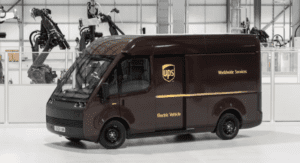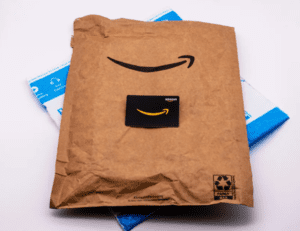 Twitter is now X? I’m sure a lot of us were confused by this announcement over the last couple of days. First and foremost, Twitter has an iconic logo (which also fits the verb of posting on the platform) that is up there with the Nike Swoosh, Channel’s interlocking C’s, McDonald’s golden arches, and Apple’s apple, amongst others. Rebranding is not as easy as it sounds. Elon Musk’s decision to rebrand Twitter as X could be complicated legally: companies including Meta and Microsoft already have intellectual property rights to the same letter. X is so widely used and cited in trademarks that it is a candidate for legal challenges – and the company formerly known as Twitter could face its own issues defending its X brand in the future. Beyond that, when Elon Musk announced that Twitter would go forward under the name X, his company didn’t even hold the @X account. Until Tuesday evening, that username belonged to Gene Hwang, a San Francisco photographer who has held it since 2007. Hwang said he received an email from the company he had suspected might be coming: X had taken the handle and offered little in return (just a trip to corporate headquarters). This rebranding will certainly be an interesting situation to watch. And now on to this week’s logistics news.
Twitter is now X? I’m sure a lot of us were confused by this announcement over the last couple of days. First and foremost, Twitter has an iconic logo (which also fits the verb of posting on the platform) that is up there with the Nike Swoosh, Channel’s interlocking C’s, McDonald’s golden arches, and Apple’s apple, amongst others. Rebranding is not as easy as it sounds. Elon Musk’s decision to rebrand Twitter as X could be complicated legally: companies including Meta and Microsoft already have intellectual property rights to the same letter. X is so widely used and cited in trademarks that it is a candidate for legal challenges – and the company formerly known as Twitter could face its own issues defending its X brand in the future. Beyond that, when Elon Musk announced that Twitter would go forward under the name X, his company didn’t even hold the @X account. Until Tuesday evening, that username belonged to Gene Hwang, a San Francisco photographer who has held it since 2007. Hwang said he received an email from the company he had suspected might be coming: X had taken the handle and offered little in return (just a trip to corporate headquarters). This rebranding will certainly be an interesting situation to watch. And now on to this week’s logistics news.
- UPS, Teamsters avoid strike
- Amazon plans to phase out plastic padded mailers
- How Instacart is using generative AI
- Drones may soon have NYC skies humming
- Coalition fears return of US whiskey tariffs
- Warehouse construction recovery expected in 2024
- How Bath & Body Works built a speedier supply chain
 UPS and the International Brotherhood of Teamsters have reached an agreement over a five-year labor contract, preventing a potential strike by roughly 330,000 package-delivery drivers and package sorters. The labor union said the contract was worth around $30 billion overall. The agreement still has to be ratified by employees. The UPS-Teamsters contract is the largest collective-bargaining agreement involving a private employer in North America, and a strike could have harmed the supply chains of many companies. UPS moves approximately 5% of the nation’s gross domestic product—or roughly $3.8 billion of goods every day, according to the U.S. Chamber of Commerce. President Biden on Tuesday congratulated the union and company on working out their differences at the bargaining table.
UPS and the International Brotherhood of Teamsters have reached an agreement over a five-year labor contract, preventing a potential strike by roughly 330,000 package-delivery drivers and package sorters. The labor union said the contract was worth around $30 billion overall. The agreement still has to be ratified by employees. The UPS-Teamsters contract is the largest collective-bargaining agreement involving a private employer in North America, and a strike could have harmed the supply chains of many companies. UPS moves approximately 5% of the nation’s gross domestic product—or roughly $3.8 billion of goods every day, according to the U.S. Chamber of Commerce. President Biden on Tuesday congratulated the union and company on working out their differences at the bargaining table.
 In an effort to tackle packaging waste, Amazon has announced its intention to stop using plastic padded bags for package delivery in a sustainability report just released. The company will replace the bags with recyclable alternatives, although it has not specified a deadline for this transition. Amazon spokesperson Elizabeth Fine stated that the company’s primary objective is to eliminate packaging whenever possible. When additional packaging is required, Amazon strives to optimize this for increased recyclability and reduced carbon emissions. The company has not set out a specific timeline for the implementation of this plan. Experts believe that Amazon’s decision, if followed through, could have a positive impact on the environment, particularly the oceans. Plastic waste poses a significant challenge for recycling, with less than 10 percent of the world’s plastic waste being recycled.
In an effort to tackle packaging waste, Amazon has announced its intention to stop using plastic padded bags for package delivery in a sustainability report just released. The company will replace the bags with recyclable alternatives, although it has not specified a deadline for this transition. Amazon spokesperson Elizabeth Fine stated that the company’s primary objective is to eliminate packaging whenever possible. When additional packaging is required, Amazon strives to optimize this for increased recyclability and reduced carbon emissions. The company has not set out a specific timeline for the implementation of this plan. Experts believe that Amazon’s decision, if followed through, could have a positive impact on the environment, particularly the oceans. Plastic waste poses a significant challenge for recycling, with less than 10 percent of the world’s plastic waste being recycled.
 It’s s no secret that Instacart was an early adopter of ChatGPT when it came barreling onto the technology scene earlier this year, counting itself among the first companies to build a plugin for the artificial intelligence (AI) chatbot developed by OpenAI. The grocery tech company asserts that AI and machine learning (ML) innovation lies at the core of everything it does, and is giving an update on how generative AI is revolutionizing its own data science. Instacart is currently using generative AI internally to make it easier for its employees to find information, run analyses and parse insights, while also using the technology to build new product experiences that better serve its customers, advertisers, retailer partners and shoppers.
It’s s no secret that Instacart was an early adopter of ChatGPT when it came barreling onto the technology scene earlier this year, counting itself among the first companies to build a plugin for the artificial intelligence (AI) chatbot developed by OpenAI. The grocery tech company asserts that AI and machine learning (ML) innovation lies at the core of everything it does, and is giving an update on how generative AI is revolutionizing its own data science. Instacart is currently using generative AI internally to make it easier for its employees to find information, run analyses and parse insights, while also using the technology to build new product experiences that better serve its customers, advertisers, retailer partners and shoppers.
 One topic that is coming to the forefront of last mile conversations is the reality of drones. If Mayor Eric Adams has his way, New York City will soon have drones buzzing everywhere. The New York City skyline could soon be dotted with small, humming drones after Mayor Eric Adams announced a rule that allows individuals and entities to apply for unmanned aircraft systems (UAS) privileges. The rule, an addition to Title 38 of the Rules of the City of New York, establishes a permitting process and guidelines for takeoff and landing of UAS within the five boroughs. Before Friday, drones were only allowed to fly within New York City Department of Transportation (DOT)-designated locations or model aircraft fields recognized by the city’s Department of Parks and Recreation (with an exception for law enforcement). Now, the public can request additional locations to be temporarily designated as drone flight zones.
One topic that is coming to the forefront of last mile conversations is the reality of drones. If Mayor Eric Adams has his way, New York City will soon have drones buzzing everywhere. The New York City skyline could soon be dotted with small, humming drones after Mayor Eric Adams announced a rule that allows individuals and entities to apply for unmanned aircraft systems (UAS) privileges. The rule, an addition to Title 38 of the Rules of the City of New York, establishes a permitting process and guidelines for takeoff and landing of UAS within the five boroughs. Before Friday, drones were only allowed to fly within New York City Department of Transportation (DOT)-designated locations or model aircraft fields recognized by the city’s Department of Parks and Recreation (with an exception for law enforcement). Now, the public can request additional locations to be temporarily designated as drone flight zones.
With these rules, we are paving the way for drones to help in New Yorkers’ everyday lives—not just in emergency situations. Drones are going to allow us to make facade inspections faster and safer, help us inspect and maintain our bridges, tunnels, and critical infrastructure, and allow us to monitor our beaches more easily for unauthorized swimmers and hazardous conditions, among other things.
 Toasts Not Tariffs has urged the US government to secure an agreement with the EU to avoid the return of retaliatory tariffs on American whiskey, which would be 50 percent in 2024. Toasts and Tariffs comprises 50 associations representing the three-tier chain of the US alcohol industry. The US had duty-free access to the EU between 1997-2018. In 2018, former US president Donald Trump imposed a 25 percent tariff on steel and 10 percent on aluminum from the EU. The EU implemented a 25 percent tariff on American whiskey and other goods in retaliation, amounting to €2.8 billion (US$3.3bn) worth of products. Between 2018 to 2021, American whiskey exports to the EU “plunged by an astonishing 20 percent” from US$552 million to US$440m, which had a “devastating impact on distilleries” across the US, said Toast Not Tariffs in a letter to on US trade representative ambassador Katherine Tai and US secretary of commerce Gina Raimondo on 19 July this year. Tariffs on American whiskey were suspended in October 2021 for two years.
Toasts Not Tariffs has urged the US government to secure an agreement with the EU to avoid the return of retaliatory tariffs on American whiskey, which would be 50 percent in 2024. Toasts and Tariffs comprises 50 associations representing the three-tier chain of the US alcohol industry. The US had duty-free access to the EU between 1997-2018. In 2018, former US president Donald Trump imposed a 25 percent tariff on steel and 10 percent on aluminum from the EU. The EU implemented a 25 percent tariff on American whiskey and other goods in retaliation, amounting to €2.8 billion (US$3.3bn) worth of products. Between 2018 to 2021, American whiskey exports to the EU “plunged by an astonishing 20 percent” from US$552 million to US$440m, which had a “devastating impact on distilleries” across the US, said Toast Not Tariffs in a letter to on US trade representative ambassador Katherine Tai and US secretary of commerce Gina Raimondo on 19 July this year. Tariffs on American whiskey were suspended in October 2021 for two years.
Interact Analysis research indicates warehouse construction is showing signs of recovering following a slowdown in 2022 and 2023. The slowdown in new warehouse construction was driven by a slowdown in e-commerce growth and higher interest rates, reducing the amount of capital flowing toward real estate developments. However, e-commerce growth rates are stabilizing and returning to pre-pandemic levels. Furthermore, the supply chain disruptions caused by COVID-19 are leading to a shift toward just-in-time supply chains, resulting in a need for greater storage capacity. It is expected e-commerce growth rates will soon return to double digits, but these are the early signs of recovery and in 2023 Interact Analysis predicted 25 percent fewer warehouses will be added to the global building stock compared with 2022. While some believe e-commerce sales are decreasing compared with the peak of the pandemic, this is misleading. Interact Analysis delved deeper and found e-commerce sales haven’t in fact come down despite seeing a declining share of e-commerce sales as a percentage of total retail sales. This is interesting as it suggests that demand for fulfillment capacity is likely to grow at a similar rate to that of pre-pandemic levels.
A $7.95 bottle of Bath & Body Works foaming hand soap used to take three months to put together. The pieces had to travel more than 13,000 miles from China, Canada and Virginia to the company’s Ohio distribution center. Bath & Body Works decided it needed to get new products to market more quickly. The result was a production initiative with little parallel in corporate America. The reshoring effort, which started in 2008, required a lot of negotiation with sometimes skeptical suppliers. The campus includes 10 manufacturers and millions of square feet of production and warehouse spaces, with 5,000 employees working there during peak production. Bath & Body Works had sales of $7.56 billion last year, increasing annual revenue by more than $2 billion since 2019.
That’s all for this week. Enjoy the weekend, and the song of the week, Changes by Tupac.

















